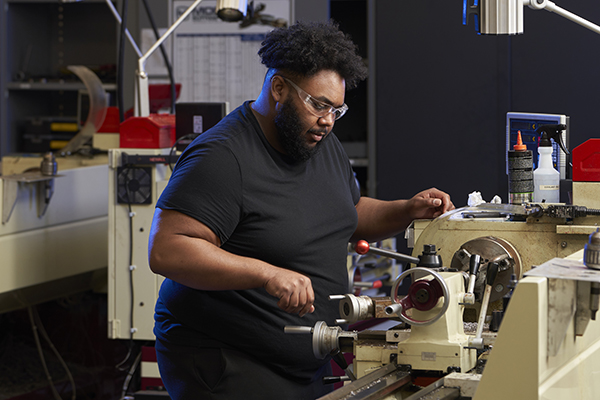Your Future Is AI-Proof: STLCC Healthcare and Associate Degree Careers
November 25, 2025
Posted by STLCC in Programs and Pathways

Artificial intelligence (AI) is changing the job market, and many young people are worried about their future. Entry-level jobs in tech, finance, and consulting are shrinking fast, but here’s the good news: healthcare careers and skilled trades are AI-proof — and St. Louis Community College (STLCC) offers programs to help you start one.
What are AI-Proof Careers?
AI-proof careers are jobs that are less likely to be automated because they require human skills, hands-on care, and critical thinking. These careers:
- Pay well (over $50,000 annually)
- Are growing faster than average
- Often require only a certificate or associate degree — not a four-year degree
That means you can start a stable, high-paying career without spending years in school.
Top AI-Proof Healthcare Careers in St. Louis
According to the Bureau of Labor Statistics, these AI-proof jobs offer strong pay and growth:
- Dental Hygienists: $94,260
- Diagnostic Medical Sonographers: $89,340
- Electricians: $62,350 per year
- HVAC Technicians: $59,810
- Occupational Therapy Assistants: $66,050
- Physical Therapist Assistants: $60,050
- Respiratory Therapists: $80,450
- Radiologic and MRI Technologists: $78,980
- Surgical Assistants and Technologists: $62,480
- Wind turbine technicians: $62,580 per year
STLCC offers training for eight of the top 10 AI-proof careers, including healthcare programs and skilled trades.
Why Healthcare Careers Are Safe from AI Automation
Healthcare jobs require human judgment, empathy, and adaptability — skills AI can’t replace. For example:
- A radiologic technologist positions patients and ensures accurate imaging.
- A respiratory therapist adjusts treatments based on real-time patient feedback.
- A physical therapist assistant motivates and guides recovery with personalized care.
These careers combine technology with human touch, making them future-proof.
Affordable Associate Degree Programs at STLCC
STLCC makes career training accessible with:
- Low tuition compared to four-year universities
- Flexible schedules for busy students
- Hands-on experience in real-world settings
- Employer connections for job placement
Many programs can be completed in two years or less, so you can start earning sooner.
Start Your AI-Proof Career Today
AI may be changing the world, but it doesn’t have to change your dreams. STLCC offers St. Louis healthcare programs and associate degree careers that lead to stability, growth, and purpose.





